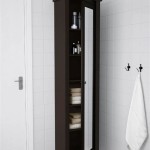Mirroring Your Phone to a Smart TV: A Comprehensive Guide
Mirroring a phone to a smart TV has become an increasingly common method for sharing content, enhancing productivity, and enjoying entertainment on a larger screen. Whether showcasing vacation photos, delivering a presentation, or simply watching a movie, the ability to seamlessly project a phone's display onto a television provides significant versatility. This article will explore the various technologies and methods available for mirroring a phone to a smart TV, along with troubleshooting tips and considerations for optimal performance.
The process of mirroring essentially duplicates the phone's screen onto the TV, providing a real-time representation of everything displayed on the mobile device. This differs from casting, where the phone instructs the TV to retrieve specific content directly from a source like Netflix or YouTube. Mirroring is particularly useful when the content is already stored on the phone or when using apps that don't directly support casting.
Several technologies facilitate screen mirroring. The most prevalent include Miracast, Google Cast (Chromecast), and Apple AirPlay. Each has its own set of requirements and compatibility considerations, which will be discussed in detail below.
Understanding Miracast Technology
Miracast is a wireless display standard that allows devices to connect directly to each other without the need for a Wi-Fi network. It essentially creates a direct Wi-Fi connection between the phone and the TV, enabling screen mirroring. This peer-to-peer connection often makes Miracast a convenient option when a reliable Wi-Fi network isn’t available.
To use Miracast, both the phone and the smart TV must support the technology. Most modern Android phones and Windows devices are Miracast-enabled. Smart TVs from various manufacturers, including Samsung, LG, Sony, and others, also commonly support Miracast. However, it is essential to check the device specifications to confirm compatibility. Older devices may not have this feature, or it may require a software update to enable Miracast functionality.
The setup process typically involves enabling screen mirroring on the phone, which may be labeled as "Smart View" (Samsung), "Wireless Display," or simply "Screen Mirroring." The phone will then scan for available Miracast-enabled devices. Once the TV is detected, selecting it will initiate the mirroring process. A prompt may appear on the TV screen requiring confirmation to allow the connection. Once authorized, the phone's display will be mirrored onto the TV.
While Miracast offers a straightforward mirroring solution, it can sometimes be susceptible to interference from other wireless devices operating on the same frequency. This interference might lead to lag or dropped connections. Optimization of Wi-Fi channels in the surrounding environment can sometimes alleviate these issues.
Another potential drawback is that Miracast consumes more battery power compared to casting or using a wired connection. This is due to the constant wireless transmission required to maintain the mirrored display. Therefore, for extended mirroring sessions, it is recommended to keep the phone plugged into a power source.
Leveraging Google Cast (Chromecast) for Screen Mirroring
Google Cast, often associated with Chromecast devices, also enables screen mirroring functionality. While Chromecast primarily focuses on casting specific content from apps, it also supports mirroring the entire phone screen. This feature is particularly useful for displaying content not directly supported by Chromecast-enabled apps or when interacting with applications directly on the large screen.
To mirror a phone screen using Google Cast, a Chromecast device or a smart TV with built-in Chromecast functionality is required. The phone and the Chromecast device or smart TV must be connected to the same Wi-Fi network. This differs from Miracast, which establishes a direct connection.
The process of mirroring involves opening the Google Home app on the phone. Selecting the Chromecast device or smart TV from the list of available devices will then provide an option to "Cast my screen." Selecting this option initiates the mirroring process, projecting the phone's display onto the TV. The quality and performance of screen mirroring using Google Cast depend on the strength and stability of the Wi-Fi network.
One advantage of Google Cast is its wide compatibility with various devices. Most Android phones and tablets support Google Cast, and a significant number of smart TVs now come with Chromecast built-in. This eliminates the need for a separate Chromecast device in many cases.
Google Cast generally offers a more stable mirroring experience than Miracast, particularly in environments with multiple wireless devices. The use of a Wi-Fi network allows for better channel management and reduced interference. However, a strong and reliable Wi-Fi connection is crucial for optimal performance. Weak Wi-Fi signals can lead to lag, buffering, or intermittent disconnections.
Unlike Miracast, Google Cast typically consumes less battery power on the phone when mirroring the screen. This is because the processing burden is shared between the phone and the Chromecast device or smart TV. This makes it a more suitable option for extended mirroring sessions without excessive battery drain.
Utilizing Apple AirPlay for Seamless Mirroring
Apple AirPlay is Apple's proprietary wireless streaming technology, enabling users to seamlessly mirror their iPhone, iPad, or Mac screen to an Apple TV or AirPlay 2-compatible smart TV. It is designed to provide a smooth and integrated experience within the Apple ecosystem. AirPlay supports both audio and video streaming, making it ideal for sharing multimedia content.
To mirror an iPhone or iPad screen using AirPlay, the device and the Apple TV or AirPlay 2-compatible smart TV must be connected to the same Wi-Fi network. The process involves opening Control Center on the iPhone or iPad and selecting "Screen Mirroring." The device will then display a list of available AirPlay destinations. Selecting the desired TV will initiate the mirroring process.
AirPlay provides a highly reliable and high-quality mirroring experience, particularly within the Apple ecosystem. It is optimized for Apple devices and offers excellent performance in terms of latency and image quality. AirPlay also supports advanced features such as audio routing, allowing users to choose where the audio is played – either on the phone or the TV speakers.
One of the primary advantages of AirPlay is its tight integration with Apple devices. This integration ensures compatibility and seamless performance. However, AirPlay is primarily limited to Apple devices, and it is not natively supported on Android phones or Windows devices without third-party software solutions.
AirPlay 2 expands the functionality of AirPlay by adding multi-room audio support and allowing multiple users to stream to different devices simultaneously. This makes it a versatile option for creating a whole-house audio system or for sharing content with multiple viewers in different rooms.
AirPlay also consumes relatively low battery power on the iPhone or iPad during screen mirroring. The efficient use of resources and optimized streaming protocols contribute to longer battery life compared to Miracast. This makes it a suitable option for extended mirroring sessions without significant battery drain.
For non-Apple devices, some third-party apps can emulate AirPlay functionality, but these often come with limitations and may not provide the same level of performance and stability as native AirPlay support.
In summary, choosing the right mirroring technology depends on the devices at hand and the desired experience. Miracast offers a direct connection option, Google Cast leverages a Wi-Fi network for potentially better performance, and AirPlay provides a seamless experience within the Apple ecosystem.

How To Mirror From Your Samsung Smartphone Tv

How To Mirror From Your Samsung Smartphone Tv New Zealand

2024 Tutorial How To Mirror Phone Tv Without Wi Fi

What Is Screen Mirroring And How Do I Use It With My Samsung Tv Mobile Device

How To Cast Iphone Android Phone Your Tv Asurion

Mirror Phone To Tv How Connect Android Or Ios Mobile Wirelessly Cast S And Photos

How To Mirror Your Android Phone A Tv 3 Easy Ways Zdnet

Displaying Your Mobile Device Screen On The Tv Samsung Levant

Screen Mirroring To Your Samsung Tv

How To Mirror An Android Device On Your Tv Cnet








